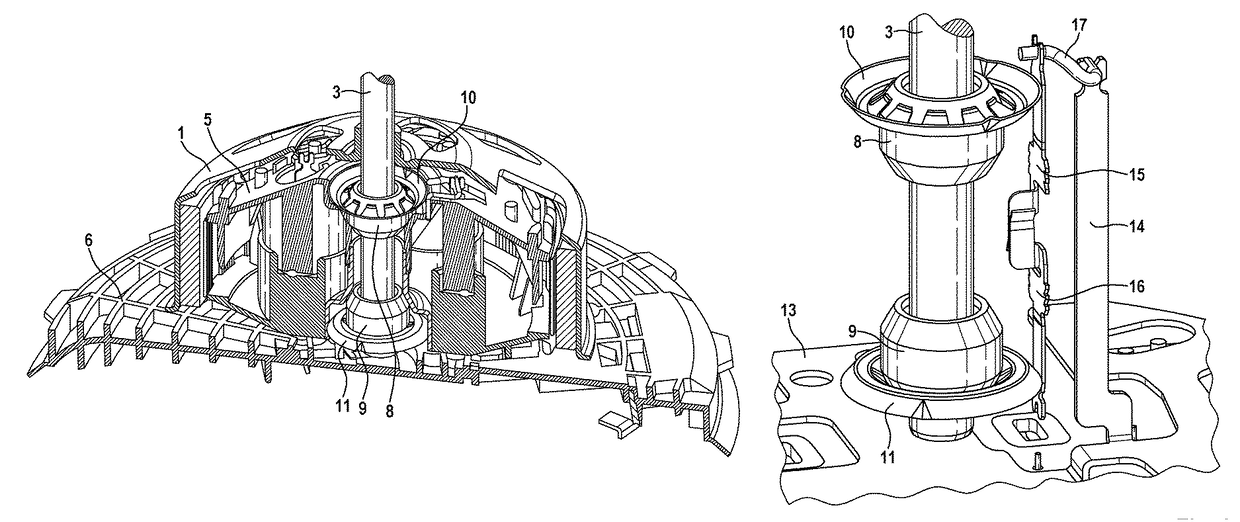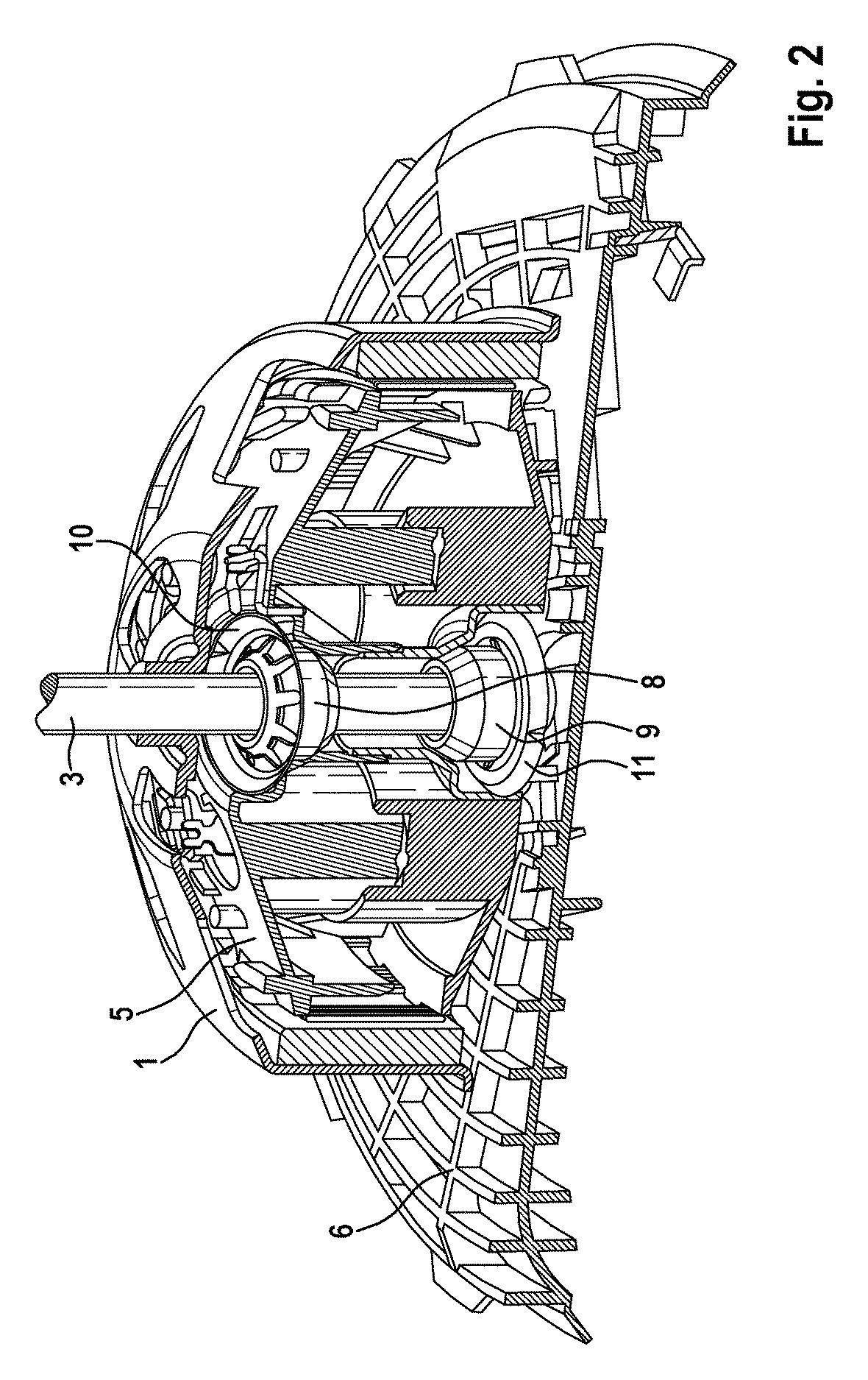Electronically commutated DC motor with shielding
a technology of electromagnetic field shielding and dc motor, which is applied in the direction of shielding from electromagnetic fields, dynamo-electric machines, supports/encloses/casings, etc., can solve the problems of insufficient shielding of electrical connections to rotating rotors, insufficient shielding of components, and inability to produce electrical connections. the effect of better discharg
- Summary
- Abstract
- Description
- Claims
- Application Information
AI Technical Summary
Benefits of technology
Problems solved by technology
Method used
Image
Examples
Embodiment Construction
[0022]A cross section through the air duct 4 of an exemplary embodiment of the DC motor is depicted in FIG. 1. A preferred application of the DC motor of flat design is the use as a fan for the air conditioning unit of a motor vehicle. To this end, a relevant fan wheel 2 is fastened to the rotating shaft 3, said fan wheel drawing in air via the air duct 4 from the exterior area of the vehicle. The rotor unit 1, which is likewise disposed on the shaft 3 in a rotationally fixed manner, consists of a metallic pole housing which is designed in a pot-shaped manner and on the interior of which magnets are fastened that interact with the coils of the stator unit 5 in a manner know per se during the operation of the electric motor, said stator unit being disposed in the pot of the rotor unit 1 and fastened to the housing flange 6. The mounting of the rotating shaft 3 in a first and second sintered bearing 8 or respectively 9, which are axially spaced apart from one another at a distance cor...
PUM
 Login to View More
Login to View More Abstract
Description
Claims
Application Information
 Login to View More
Login to View More - R&D
- Intellectual Property
- Life Sciences
- Materials
- Tech Scout
- Unparalleled Data Quality
- Higher Quality Content
- 60% Fewer Hallucinations
Browse by: Latest US Patents, China's latest patents, Technical Efficacy Thesaurus, Application Domain, Technology Topic, Popular Technical Reports.
© 2025 PatSnap. All rights reserved.Legal|Privacy policy|Modern Slavery Act Transparency Statement|Sitemap|About US| Contact US: help@patsnap.com



